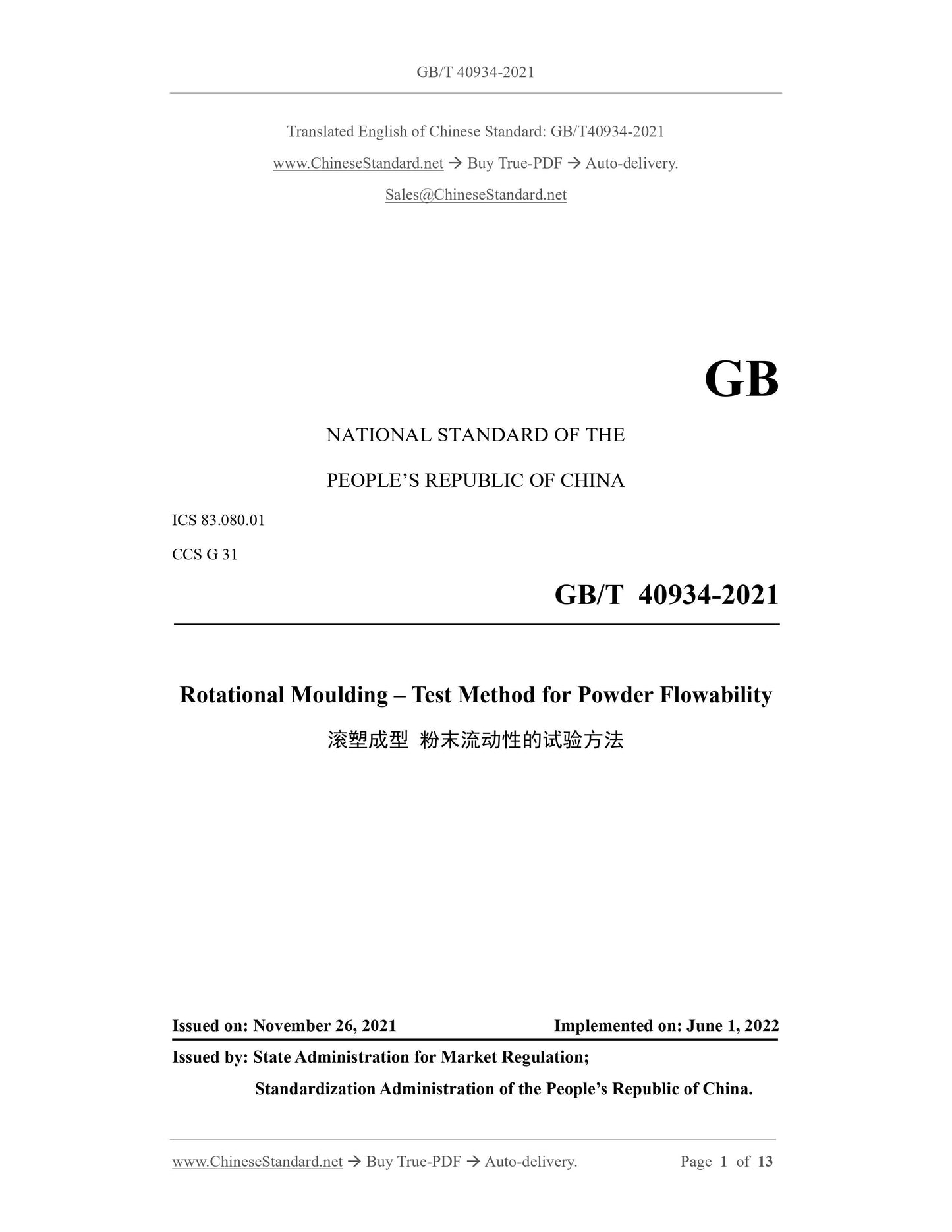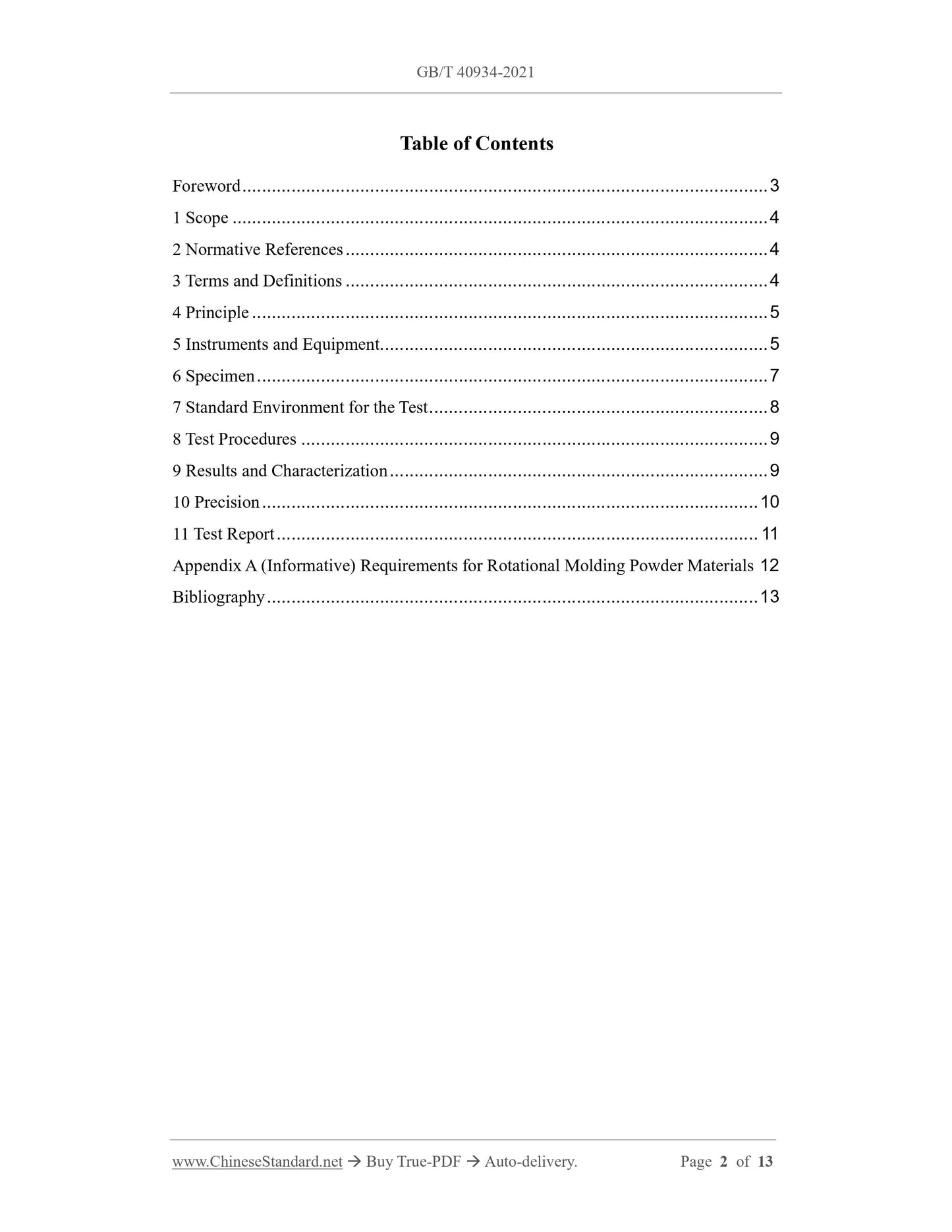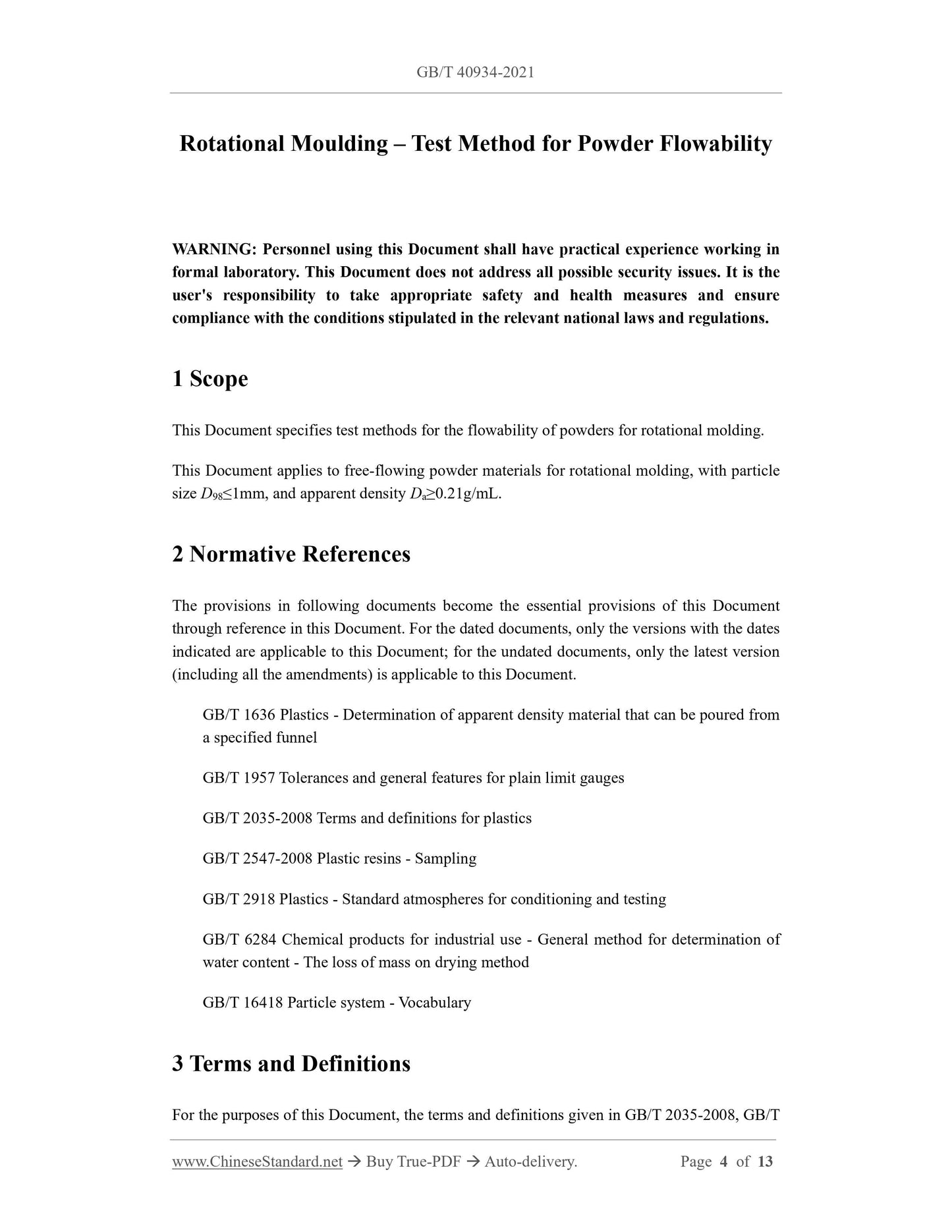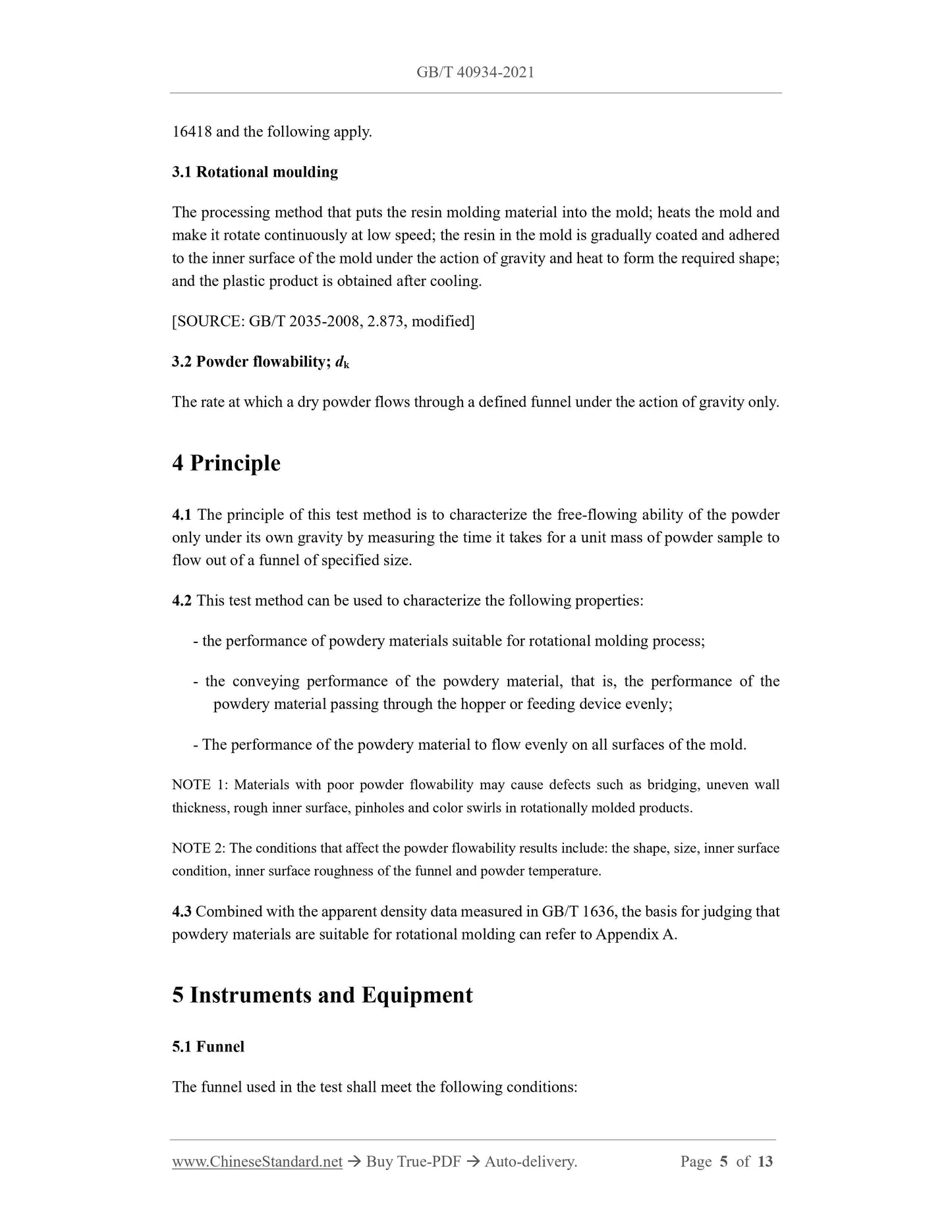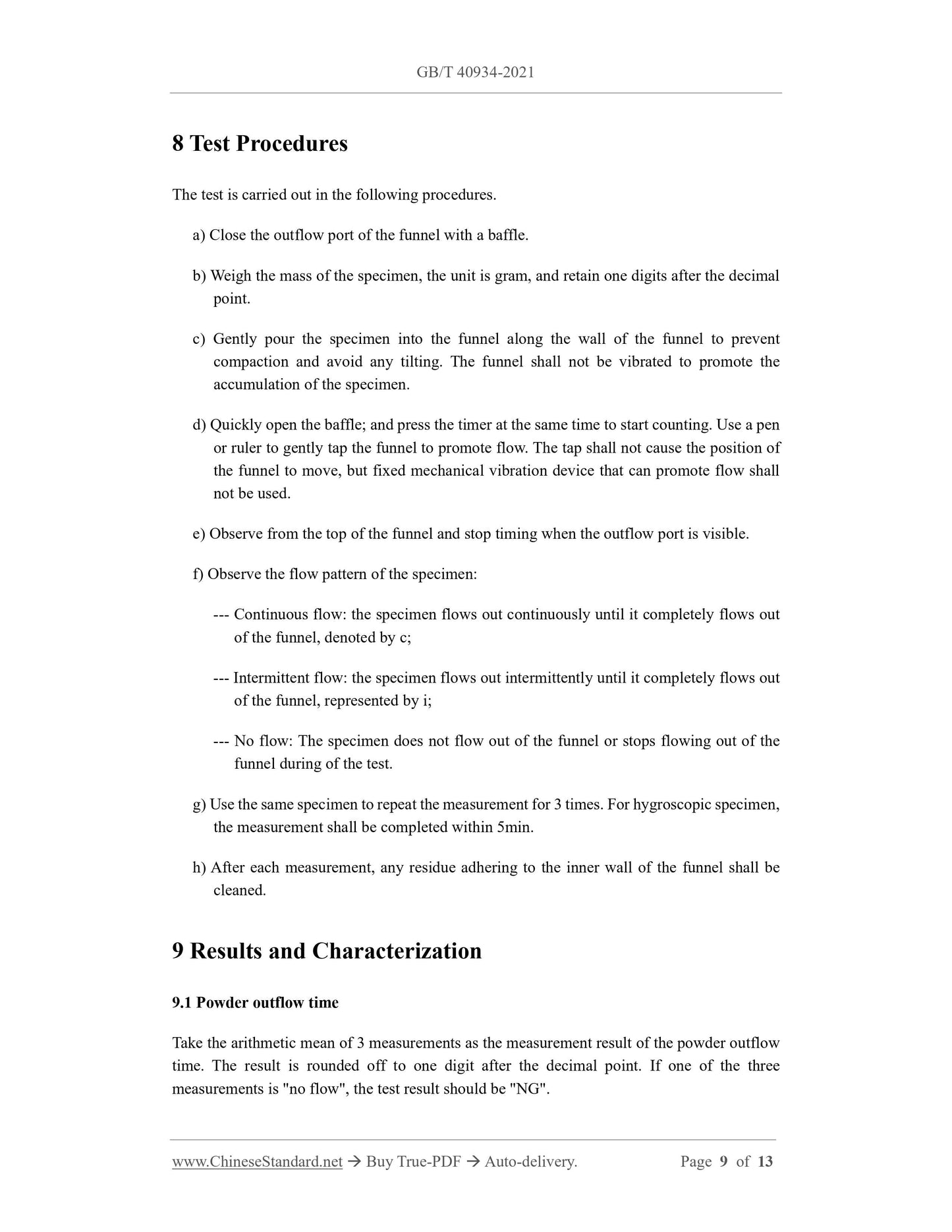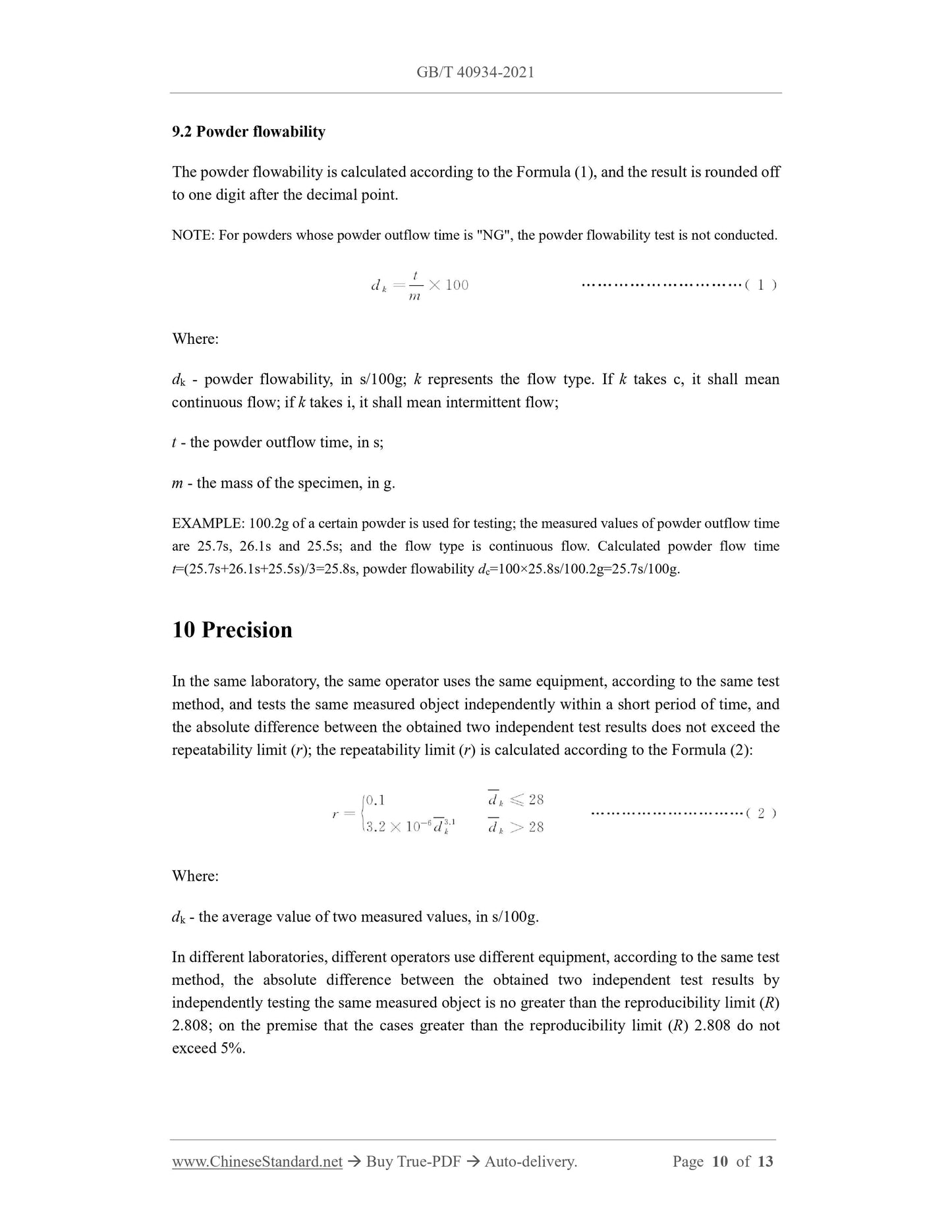1
/
of
6
www.ChineseStandard.us -- Field Test Asia Pte. Ltd.
GB/T 40934-2021 English PDF (GB/T40934-2021)
GB/T 40934-2021 English PDF (GB/T40934-2021)
Regular price
$170.00
Regular price
Sale price
$170.00
Unit price
/
per
Shipping calculated at checkout.
Couldn't load pickup availability
GB/T 40934-2021: Rotational moulding - Test method for powder flowability
Delivery: 9 seconds. Download (and Email) true-PDF + Invoice.Get Quotation: Click GB/T 40934-2021 (Self-service in 1-minute)
Newer / historical versions: GB/T 40934-2021
Preview True-PDF
Scope
This Document specifies test methods for the flowability of powders for rotational molding.This Document applies to free-flowing powder materials for rotational molding, with particle
size D98≤1mm, and apparent density Da≥0.21g/mL.
Basic Data
| Standard ID | GB/T 40934-2021 (GB/T40934-2021) |
| Description (Translated English) | Rotational moulding - Test method for powder flowability |
| Sector / Industry | National Standard (Recommended) |
| Classification of Chinese Standard | G31 |
| Word Count Estimation | 11,143 |
| Issuing agency(ies) | State Administration for Market Regulation, China National Standardization Administration |
Share
